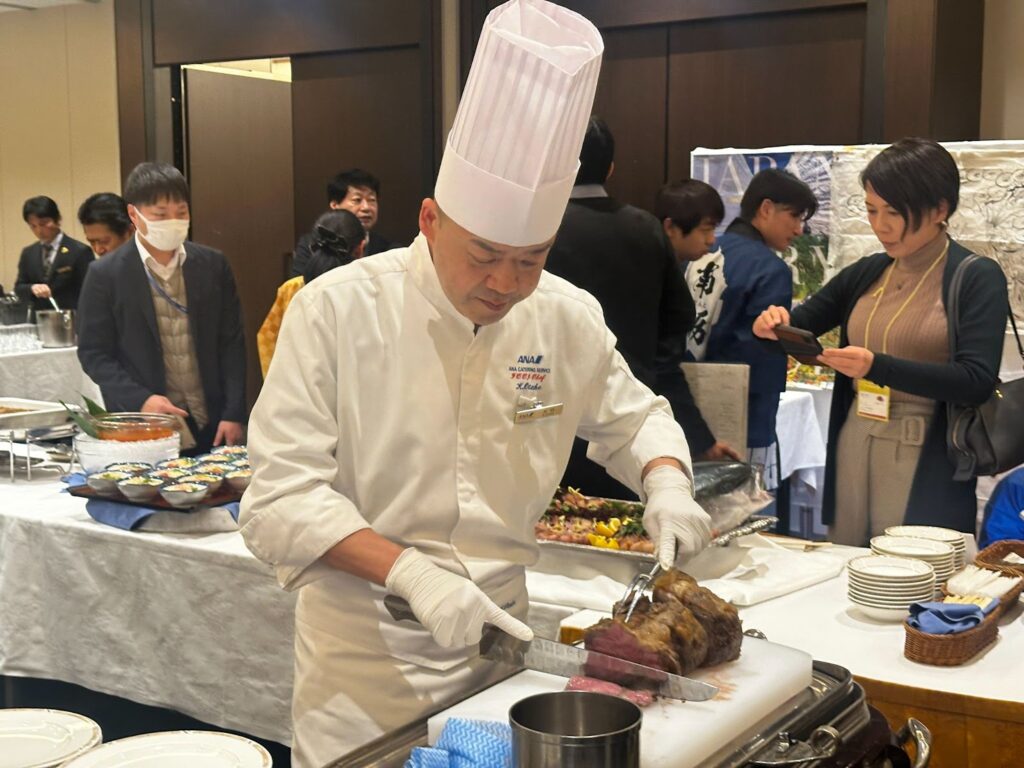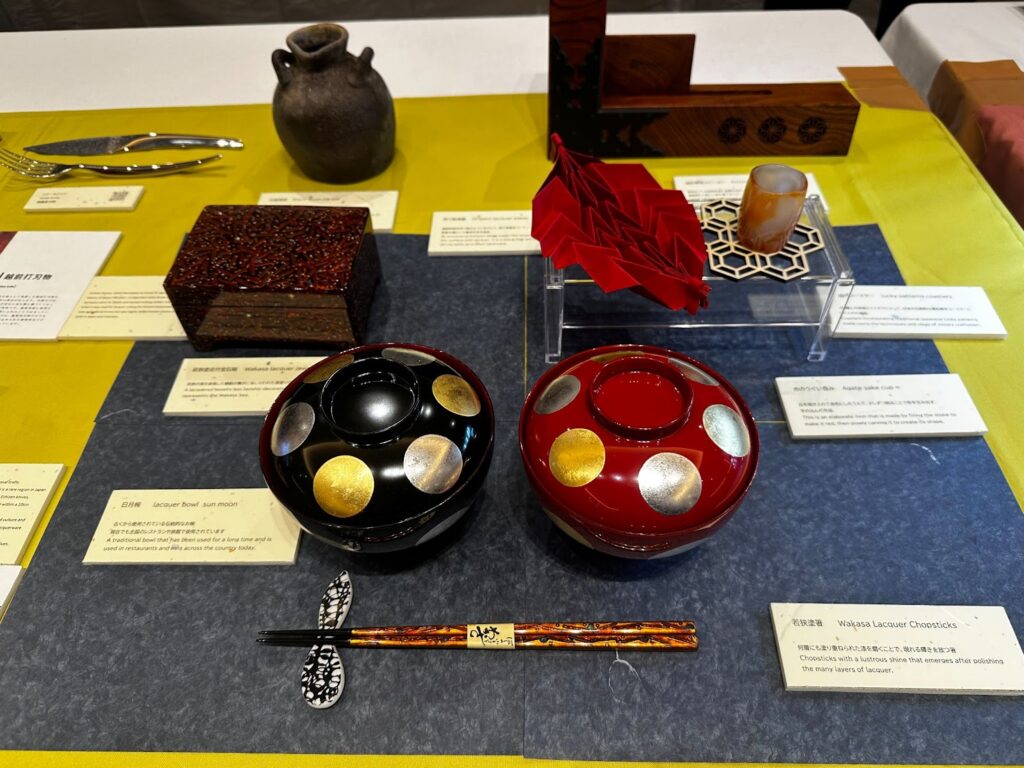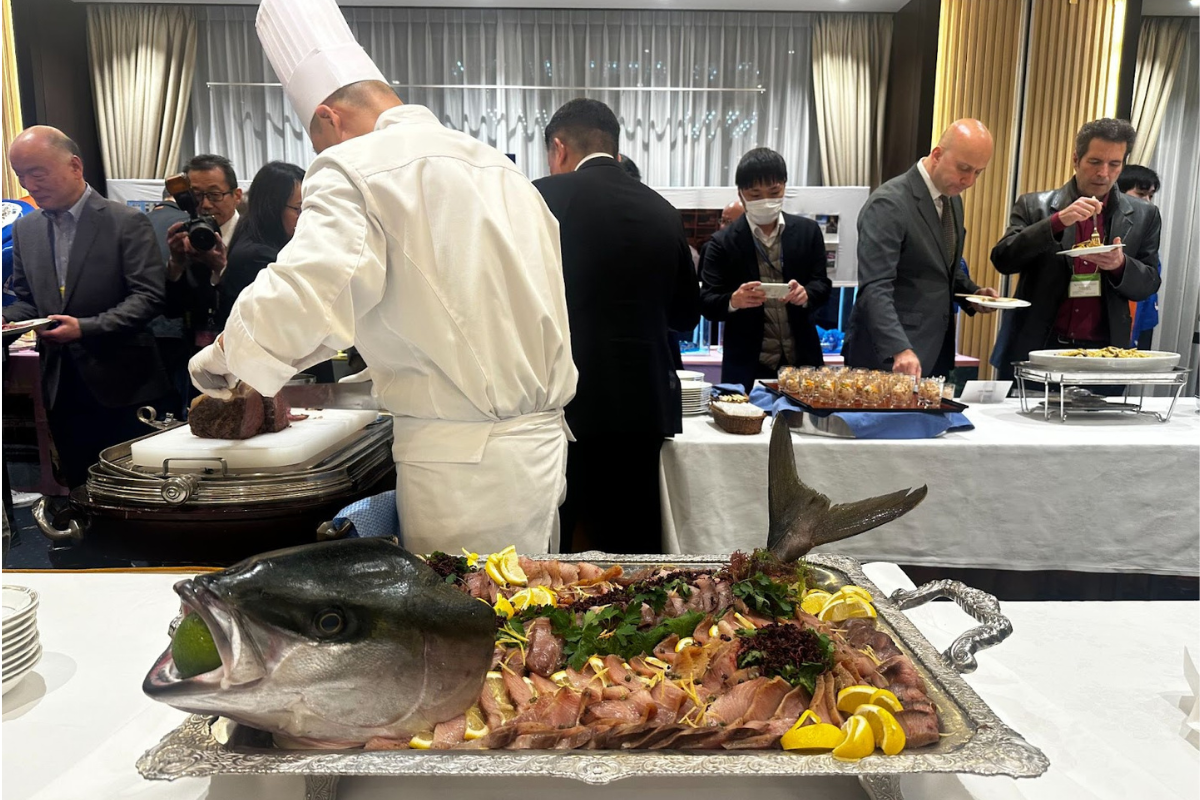Highlighting Hokuriku After the Shinkansen Extension
On February 21, The Foreign Correspondents’ Club of Japan (FCCJ) hosted Hokuriku Night, offering an immersive experience inspired by the Hokuriku travel guide Ishikawa Fukui Toyama. This event showcased the cultural and culinary richness of Japan’s northwestern Honshu region. The timing was significant due to the extension of the Hokuriku Shinkansen in March. This extension established a direct rail link between Tokyo and the prefectures of Toyama, Ishikawa, and Fukui. As a result, the event provided a timely opportunity to highlight the region’s appeal to potential travelers.
Opening Remarks: Telling Authentic Stories of Japan
FCCJ President Dan Sloan opened the evening by emphasizing the importance of telling authentic stories about Japan, stating, “We want to highlight what can tell the true story of Japan … we want to report on what makes Japan an incredibly wonderful and vibrant country.” Representatives from each of the three prefectures introduced attendees to the distinctive attractions and cultural heritage of their respective areas. Artisan demonstrations and a buffet followed the presentations, allowing attendees to engage with the region’s craftsmanship and cuisine firsthand. This comprehensive Hokuriku travel guide Ishikawa Fukui Toyama highlights the region’s rich traditions, cuisine, and natural beauty.

Top Things to Do in Toyama Prefecture: Nature, Culture, and Festivals
Tomoko Nakaya, of the Toyama Prefectural Government’s cruise ship promotion, foreign tourists attractions section, introduced Toyama Prefecture, highlighting the region’s rich agriculture, nature and renowned seafood. During her presentation, she highlighted several tourist spots. Including the Tateyama Kurobe Alpine Route, famous for the Tateyama Yuki no Otani snow wall. A remarkable corridor flanked by towering snow walls reaching up to 20 meters. Nakaya also highlighted the historic villages of Gokayama. This has been recognized as a UNESCO World Heritage site for their traditional gasshō-zukuri farmhouses, some more than 400 years old. She also spoke about the Owara Kaze no Bon folk festival. Which is a traditional dance event held annually in September where performers don kimono and dance gracefully through the streets. A tradition cherished for more than 300 years.
Pierre Leroux, inbound marketing planner of the Fukui Prefectural Tourism Federation, described Fukui as one of Japan’s most spiritual regions, a reputation highlighted by its rich cultural heritage. The prefecture is home to Eiheiji Temple, the largest zen training site in Japan. Fukui is also renowned for its craftsmanship, particularly in making knives and washi (traditional Japanese paper) from Echizen. Leroux also noted that Fukui is a hub for dinosaur research. It highlighted the Fukui Prefectural Dinosaur Museum as one of the prefecture’s main attractions. Organizers have planned a Dino-a-Live event for the Osaka Expo on July 16, where lifelike dinosaurs will roam freely among attendees.
Discovering Ishikawa Prefecture: Tradition, Nature, and Relaxation
Yumiko Omoteguchi is the Europe, North America, and Oceania markets Team Leader for the Inbound Tourism Division of the Ishikawa Prefectural Government. She presented Ishikawa by emphasizing the prefecture’s core values of tradition, nature, and relaxation. She highlighted the region’s abundant hot spring resorts, such as those found in the Kaga and Noto areas. Artisans in Ishikawa have mastered 36 designated traditional crafts. This includes pottery, lacquerware, and kaga yuzen silk dyeing a technique they use to create exquisite kimonos with elaborate hand-painted patterns.”

Hokuriku’s Culinary and Craftsmanship Showcase
Following the presentations, we had the opportunity to experience Hokuriku’s rich culinary and artisan traditions firsthand. A buffet featuring delicacies from each prefecture included lightly smoked Himi no Kanburi (yellowtail) carpaccio-style from Toyama, noto buta (pork) grilled in a rock salt crust from Ishikawa and crab cocktail from Fukui. A selection of drinks, including wine from Ishikawa, whiskey from Toyama and umeshu from Fukui was available to sample.
In addition to food and drink, live artisan demonstrations gave attendees an up-close look at some of the region’s traditional crafts. Guests were invited to try their hand at testing an authentic Echizen knife from Fukui by slicing a piece of pork. An artisan wood crafter was on site to demonstrate traditional inami woodcarving techniques from Toyama, and intricately designed lacquerware from Fukui was on display.

Why Hokuriku Should Be Your Next Travel Destination in Japan
The expansion of the Hokuriku Shinkansen presents a major opportunity for these lesser-known prefectures to attract more visitors, particularly as Japan experiences a surge in post-pandemic inbound tourism. With popular destinations such as Kyoto and Tokyo struggling with overtourism, Hokuriku offers a compelling alternative for travelers seeking a deeper connection to Japan’s heritage, nature and traditional craftsmanship.

